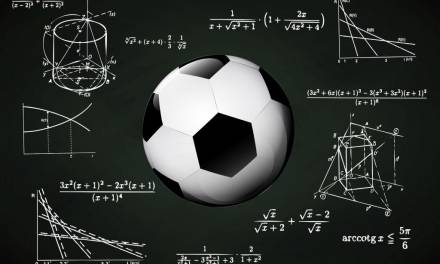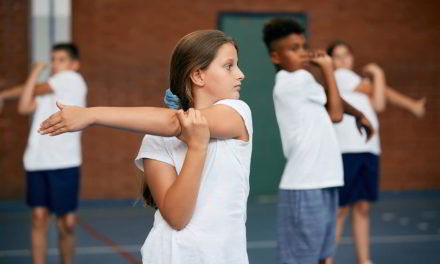Over the last few years, there has been an increasing emphasis on improving numeracy and literacy across all subjects, not just in Maths and English lessons.
You might think that PE is a very hard subject to incorporate maths into but there are actually many different options available for teachers to include elements of maths in PE lessons.
Here are five examples of ways to teach maths through sport.
1. Timing with stopwatches
In athletics, track race events are measured in time, so giving pupils the responsibility to use the stopwatch to record times for each runner in the event can help teach pupils how to calculate in a different base (base 60).
Depending on the ability and how far you want to take the maths element, you could ask pupils to order the class in terms of their times from fastest to slowest. You could ask them to calculate the average speed of the class for each event.
Pupils can also learn how to convert base 60 into base 10, and use percentages to calculate differences in race results – e.g. pupil A was 15% faster than pupil B.
2. Scorekeeping
In some sports keeping score can be very easy but in others like table tennis there can be a lot of complexity in the scoring, as you take into account the rules of scoring and serving, etc.
High-scoring games like basketball and cricket are also good sports to practice maths in, asking pupils to be the scorekeeper and calculate shooting averages (basketball) and batting and bowling figures (cricket).
For more advanced pupils, you can ask them to calculate possible outcomes for cricket matches based on batting scores at different times during the match. Calculations should be made using the Duckworth Lewis Stern method.
3. Angles of rotation
Many techniques for sports can be broken down into explanations that involve angles of rotation. For example, to describe the different degrees of rotation a gymnastic goes through during a 360-degree flip.
The University of Cambridge’s Maths and Sport website provides a number of challenges such as the Key Stage 3 – Gymnastics Angles of Rotation Challenge, which involves pupils analysing a video of an Olympian gymnast performing a 360-degree flip.
In this challenge, they are asked to mark four different degrees of rotation that the gymnast’s body passes through. Trampolining is another sport that can be analysed to look at the angles of rotation.
4. Angles
There are many other sports that can help to teach angles, particularly in reference to techniques.
For example, when explaining the angles that the throwing arm should be in throughout the different phases of throwing a javelin. You can also use angles to describe the way that the javelin should be held as it is released i.e. the angle of projection, or the shape that the javelin makes as it is thrown (angle of trajectory).
As detailed by Brunel University, the ‘optimum’ angle for projection is considered to be 45°:
One of the best known ‘results’ of the science of mechanics is that the optimum projection angle for achieving maximum horizontal range is 45°. However, it is also well known that actual performers in projectile-related sports seldom use an angle of 45°.
As well as describing how pupils should be aiming different objects when they are throwing, you can analyse videos of athletes to discuss the projection angles.
5. Formations and shapes
When coaching a team games like football, the use of formations is a common way of describing how the team should line up. By learning about different types of formations, pupils can use maths in a different way to usual.
Shapes are an element of maths that can easily be used in sport, such as triangles to describe how players should make themselves available to receive a ball from their team mates, so that the player with the ball has three passing options.
Dance also involves a lot of references to shapes in regards to routines and formations for groups of dancers.
If you take a look at the Dancenex website, they share various shapes that are commonly used in dance to achieve perfect choreography. They also outline how a good understanding of maths is really important in being able to perform dance routines to the highest level.
There really are so many different ways to weave maths into sport and PE lessons and you are probably already doing it regularly without even thinking about it. Talk to your colleagues in the maths department at your school and see if they can help you come up with even more ways to incorporate maths into PE lessons.
Don’t forget that the lesson plans available with a subscription to PE Office include cross-curricular aspects for English, maths and science. You can download examples of our lesson plans here.










